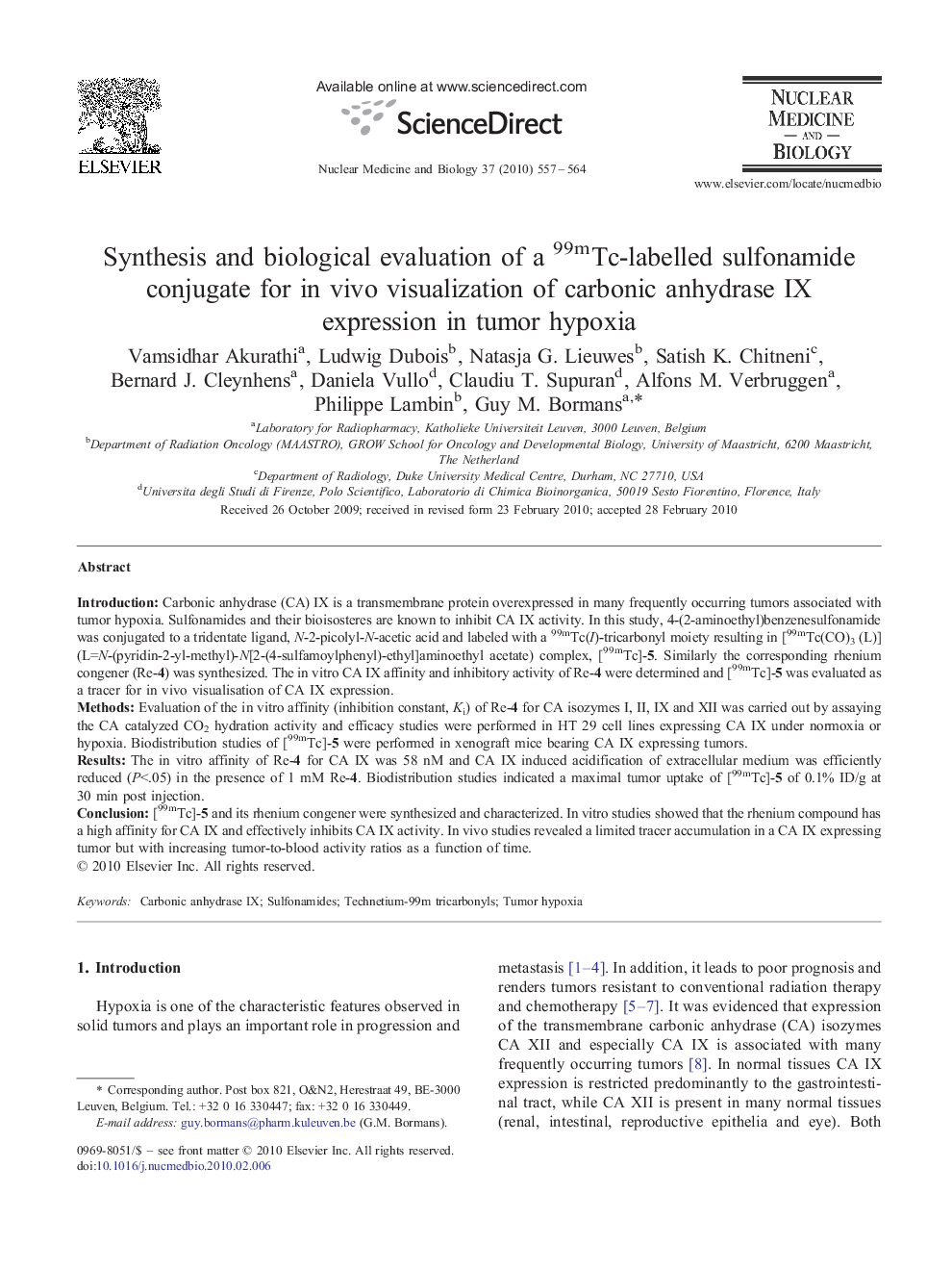| Article ID | Journal | Published Year | Pages | File Type |
|---|---|---|---|---|
| 2154203 | Nuclear Medicine and Biology | 2010 | 8 Pages |
IntroductionCarbonic anhydrase (CA) IX is a transmembrane protein overexpressed in many frequently occurring tumors associated with tumor hypoxia. Sulfonamides and their bioisosteres are known to inhibit CA IX activity. In this study, 4-(2-aminoethyl)benzenesulfonamide was conjugated to a tridentate ligand, N-2-picolyl-N-acetic acid and labeled with a 99mTc(I)-tricarbonyl moiety resulting in [99mTc(CO)3 (L)] (L=N-(pyridin-2-yl-methyl)-N[2-(4-sulfamoylphenyl)-ethyl]aminoethyl acetate) complex, [99mTc]-5. Similarly the corresponding rhenium congener (Re-4) was synthesized. The in vitro CA IX affinity and inhibitory activity of Re-4 were determined and [99mTc]-5 was evaluated as a tracer for in vivo visualisation of CA IX expression.MethodsEvaluation of the in vitro affinity (inhibition constant, Ki) of Re-4 for CA isozymes I, II, IX and XII was carried out by assaying the CA catalyzed CO2 hydration activity and efficacy studies were performed in HT 29 cell lines expressing CA IX under normoxia or hypoxia. Biodistribution studies of [99mTc]-5 were performed in xenograft mice bearing CA IX expressing tumors.ResultsThe in vitro affinity of Re-4 for CA IX was 58 nM and CA IX induced acidification of extracellular medium was efficiently reduced (P<.05) in the presence of 1 mM Re-4. Biodistribution studies indicated a maximal tumor uptake of [99mTc]-5 of 0.1% ID/g at 30 min post injection.Conclusion[99mTc]-5 and its rhenium congener were synthesized and characterized. In vitro studies showed that the rhenium compound has a high affinity for CA IX and effectively inhibits CA IX activity. In vivo studies revealed a limited tracer accumulation in a CA IX expressing tumor but with increasing tumor-to-blood activity ratios as a function of time.
